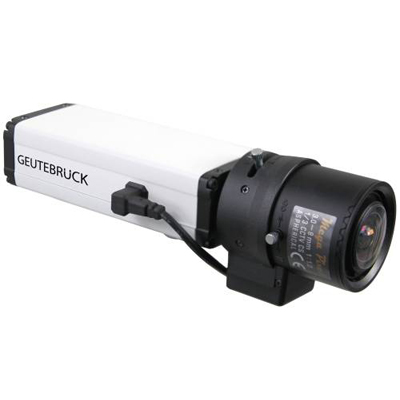1. EXECUTIVE SUMMARY
-
CVSS v3 7.2
- ATTENTION: Exploitable remotely/low skill level to exploit
- Vendor: Geutebrück GmbH
- Equipment: E2 Camera Series
- Vulnerability: OS Command Injection
2. RISK EVALUATION
Successful exploitation of this vulnerability may allow a remote attacker to inject OS commands as root.
3. TECHNICAL DETAILS
3.1 AFFECTED PRODUCTS
Geutebrück reports the vulnerability affect the following IP cameras:
E2 series cameras running firmware versions prior to 1.12.0.25
3.2 VULNERABILITY OVERVIEW
3.2.1 IMPROPER NEUTRALIZATION OF SPECIAL ELEMENTS USED IN AN OS COMMAND (‘OS COMMAND INJECTION’) CWE-78
The DDNS configuration (in the Network Configuration panel) is vulnerable to an OS system command injection as root.
CVE-2018-19007 has been assigned to this vulnerability. A CVSS v3 base score of 7.2 has been calculated; the CVSS vector string is (AV:N/AC:L/PR:H/UI:N/S:U/C:H/I:H/A:H).
3.3 BACKGROUND
- CRITICAL INFRASTRUCTURE SECTORS: Commercial Facilities, Energy, Financial Services, Healthcare and Public Health
- COUNTRIES/AREAS DEPLOYED: Europe, United States, Australia
- COMPANY HEADQUARTERS LOCATION: Germany
3.4 RESEARCHER
Davy Douhine of RandoriSec reported this vulnerability to NCCIC. The researcher has validated that the new version of the firmware resolves the reported vulnerability.
4. MITIGATIONS
Geutebrück recommends E2 series IP camera users download and update to the newest firmware version, 1.12.0.25, by registering for a new WebClub account, or by logging into an existing account at the following location:
https://www.geutebrueck.com//en_EN/login.html
NCCIC recommends users take defensive measures to minimize the risk of exploitation of this vulnerability. Specifically, users should:
- Minimize network exposure for all control system devices and/or systems, and ensure that they are not accessible from the Internet.
- Locate control system networks and remote devices behind firewalls, and isolate them from the business network.
- When remote access is required, use secure methods, such as Virtual Private Networks (VPNs), recognizing that VPNs may have vulnerabilities and should be updated to the most current version available. Also recognize that VPN is only as secure as the connected devices.
NCCIC reminds organizations to perform proper impact analysis and risk assessment prior to deploying defensive measures.
NCCIC also provides a section for control systems security recommended practices on the ICS-CERT web page. Several recommended practices are available for reading and download, including Improving Industrial Control Systems Cybersecurity with Defense-in-Depth Strategies.
Additional mitigation guidance and recommended practices are publicly available on the ICS-CERT website in the Technical Information Paper, ICS-TIP-12-146-01B–Targeted Cyber Intrusion Detection and Mitigation Strategies.
Organizations observing any suspected malicious activity should follow their established internal procedures and report their findings to NCCIC for tracking and correlation against other incidents.
No known public exploits specifically target this vulnerability.
Source:
https://ics-cert.us-cert.gov/advisories/ICSA-18-347-03


Stay connected